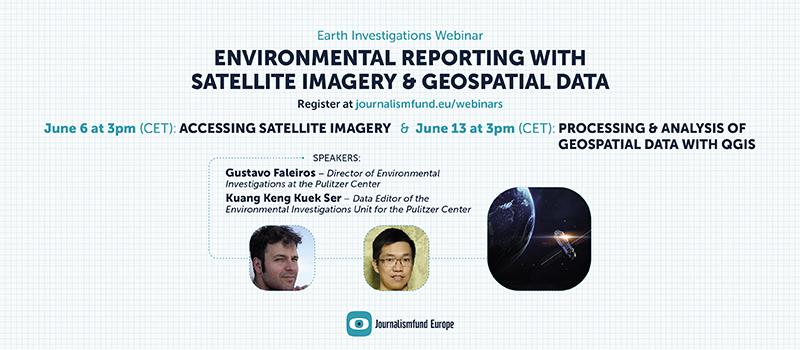How to incorporate satellite imagery and geospatial data to expand and strengthen environmental reporting?
FIND THE VIDEO RECORDINGS BELOW
This was a series of two online sessions that caters to beginners who need an introduction to the world of remote sensing and learn basic steps in accessing online satellite imagery and using QGIS, an open-source geographic information system (GIS) software, to perform simple geospatial analysis for environmental reporting purposes.
The webinars were conducted by the editors of the environmental investigations unit at the Pulitzer Center, which has been supporting the Rainforest Investigations Network (RIN) and the Ocean Reporting Network (ORN) in producing in-depth and impactful environmental reporting. Both sessions are based on reports published by RIN fellows and their datasets.
Both sessions were hands-on with step-by-step, follow-along demonstrations of accessing satellite imagery platforms and QGIS.
Trainers:
Gustavo Faleiros - Director of the Environmental Investigations for the Pulitzer Center.
Kuang Keng Kuek Ser - Data Editor of the Environmental Investigations Unit for the Pulitzer Center.
Session 1: Accessing satellite imagery
Date: 6 June 2024, 15.00 CET, 1.5 hours
This session will introduce the basics of remote sensing and satellite imagery. Participants will understand how satellite imagery can drive and strengthen environmental reporting through previous stories done by RIN fellows. They will learn the different approaches to use satellite imagery for investigations and how to access free satellite imagery from various platforms and tools.
Session 2: Processing & analysis of geospatial data with QGIS
Date: 13 June 2024, 15.00 CET, 1.5 hours
This session will walk participants through essential functions and features of QGIS for practical tasks such as calculating and comparing the size of deforestation, checking whether a mine is encroaching on indigenous land, or illegal activities are taking place in regulated areas.
Participants will learn how to open, visualize and manipulate different types of geospatial data, including vector polygons, coordinate points and satellite imagery from different sources such as Google Maps and Planet Lab. The session will use datasets from environmental investigations conducted by RIN fellows.
By the end of this session, journalists will be equipped with the basic skills to start using QGIS, integrating geospatial data analysis into their reporting and investigative toolkit.
